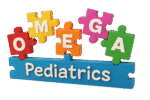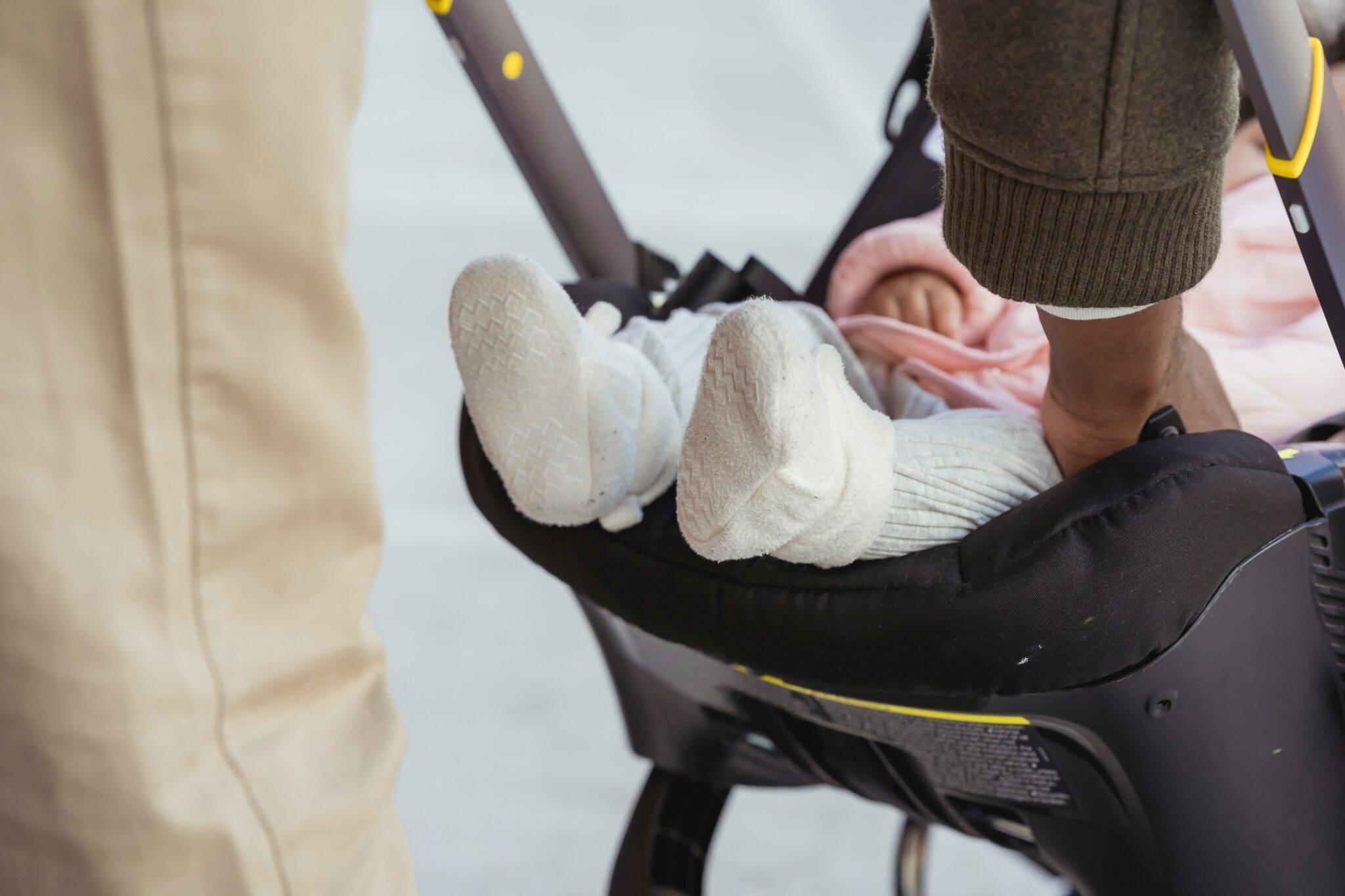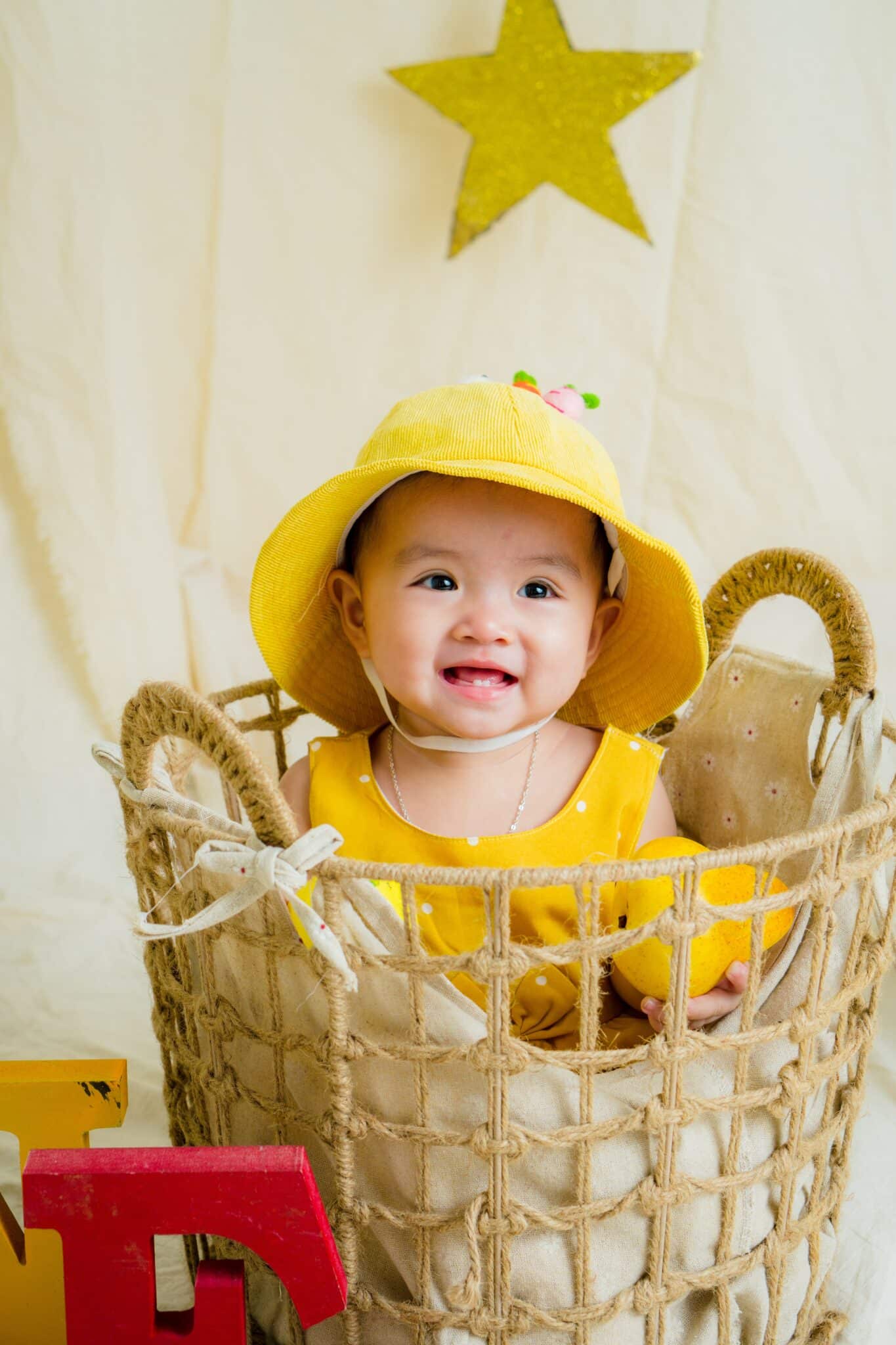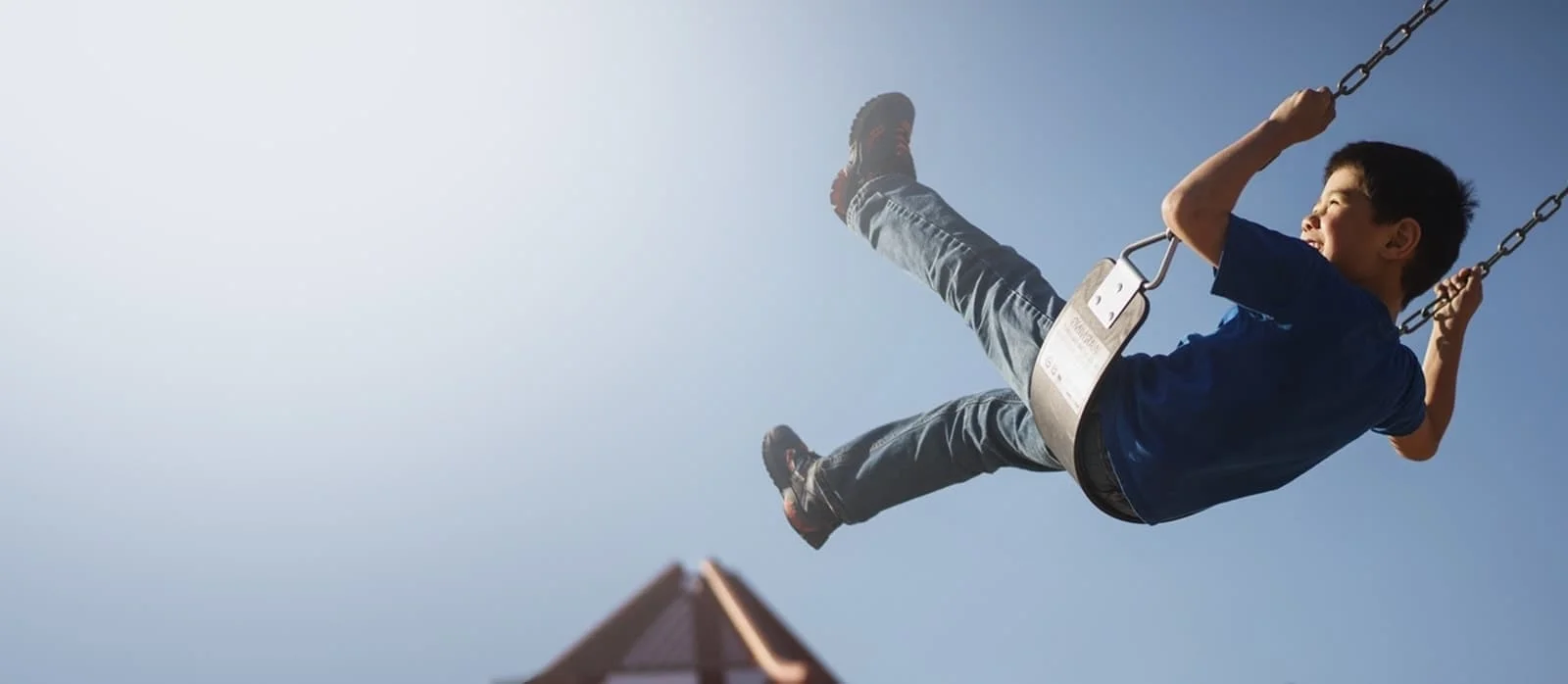Every new parent looks forward to witnessing their baby’s first smile, sounds, and steps. These are just a few developmental milestones that mark a baby’s growth and progress. However, understanding what developmental milestones to expect and how to support them can feel overwhelming.
This guide breaks down the essential developmental milestones for newborns and provides practical ways to nurture your baby’s growth in their first year. Recognizing and responding to your baby’s needs in these critical early stages sets the foundation for their future physical, emotional, and cognitive development. In this article, we’ll explore how to identify key developmental milestones, when to expect them, and simple steps you can take to support your baby’s overall development.
What Are Developmental Milestones?
Developmental milestones are specific behavioral or physical checkpoints in infants and children as they grow and develop. These are important because they guide a baby’s expected development at certain ages. Pediatricians use these milestones to assess whether a child is growing as expected or may need additional support.
These milestones fall into four main categories:
- Physical (Motor Skills): This includes grasping, rolling, and later, crawling and walking.
- Cognitive (Thinking and Learning Skills): These milestones involve how babies learn to understand their environment, solve problems, and remember things.
- Social and Emotional: This involves how babies interact with others, express emotions, and form relationships.
- Language and Communication: This category covers the development of vocalizations, understanding speech, and later, forming words and sentences.
These categories reflect the multifaceted way babies grow, and monitoring them gives insight into how your baby is developing. Every child is unique, and while developmental milestones provide general guidelines, each baby will reach them on their timeline.
Why is Tracking Developmental Milestones Important?
Developmental milestones act as benchmarks for your baby’s progress. Why should parents pay attention to these milestones? Milestones indicate how your baby’s brain and body are developing. Tracking these milestones gives parents and healthcare professionals early indications of how your baby is developing.
Developmental milestones signal your baby is on the right path and provide warning signs if there’s a delay. Catching potential developmental delays early allows for timely intervention, making a big difference in a child’s long-term development. Tracking developmental milestones also strengthens the bond between you and your baby. By actively engaging with your child and offering activities to support their growth, you create moments of connection and love that are critical for their emotional development.
Developmental Milestones in the First Month
The first month of your newborn’s life is rapid change and adaptation. Babies are born with several reflexes that ensure survival and set the stage for complex behaviors.
Reflexes: The Foundation of Early Development
In the first few weeks after birth, newborns display a set of automatic reflexes necessary for survival and early development. These reflexes help doctors assess the health of a baby’s nervous system and are foundational for future voluntary movements. Let’s look into the key reflexes to watch for in your newborn.
- Rooting Reflex: This is one of the first reflexes parents notice in their babies. When you gently stroke your baby’s cheek, they will turn their head toward the touch and make sucking motions. The baby instinctively prepares to nurse. This reflex helps babies find the breast or bottle and begin feeding.
How to Support:
- Encourage Nursing: Take advantage of this reflex by gently stroking your baby’s cheek when feeding. This helps with breastfeeding and strengthens the bond between you and your baby.
- Skin-to-Skin Contact: Hold your baby close during feeding, which will help stimulate the reflex and provide comfort.
2. Sucking Reflex: This reflex helps newborns feed. Babies suck instinctively when something touches the roof of their mouth. This reflex is present at birth and develops further as babies learn to coordinate sucking, swallowing, and breathing.
How to Support:
- Offer Comfort: Beyond feeding, many babies find comfort in sucking, whether on a pacifier or their thumb. Offering a pacifier or letting them suck on your finger soothe a fussy baby.
- Support Feeding: Ensure your baby is properly latching during breastfeeding or feeding with a bottle, as this promotes strong sucking skills.
3. Moro Reflex (Startle Reflex): This is an automatic response to a sudden movement or loud sound. When startled, newborns throw their arms and legs out and curl them back in. This reflex fades when babies reach 3-4 months of age.
How to Support:
- Comfort After Startle: Gently comfort your baby after they’ve been startled. Holding them securely in your arms can help them feel safe.
- Minimize Startling: Create a calm environment during nap times to reduce startling. Soft lighting and soothing sounds can be helpful.

4. Grasp Reflex: When you place your finger in a newborn’s palm, it automatically closes its hand around it. This is called the grasp reflex, one of the strongest at birth. Babies will eventually outgrow the grasp reflex as they gain more control over their hand movements. This is a precursor to voluntary grasping, which will come later.
How to Support:
- Offer Objects to Hold: Place a soft toy or your finger in your baby’s hand to stimulate the grasp reflex. Over time, this helps develop their fine motor skills.
- Tummy Time: Tummy time strengthens your baby’s upper body and hand muscles, which are important for voluntary grasping in the future.
Tracking Movement
Your newborn’s vision is still developing, but by the end of the first month, they can focus on faces or objects close to them. Your baby will also track moving objects with their eyes, although movements are still jerky.
How to Support:
- Face-to-Face Time: Spend time face-to-face with your baby. Newborns are naturally drawn to human faces, and this practices their focus and strengthens their emotional bond.
- Introduce High-Contrast Patterns: Babies see best in black-and-white or high-contrast patterns. Show them simple, bold images to stimulate their visual development.
Communication: Crying as a Language
Crying is the primary way newborns communicate their needs. Babies cry when they’re hungry, uncomfortable, tired, or in need of a diaper change. Recognizing different types of crying will help you respond to your baby’s needs more effectively.
How to Support:
- Respond Quickly: When your baby cries, respond promptly. This helps build trust and reassures your baby that their needs will be met.
- Talk to Your Baby: Although they can’t understand words, talking to your baby is important for language development. Babies learn about language long before they speak, so narrating your activities or reading aloud can stimulate their communication skills.
Physical Development: Months 2 to 3
By the end of the first month, your baby starts to make more intentional movements. These early signs of physical development include lifting their head during tummy time and beginning to track objects with their eyes. Let’s look at how you can support this stage of development. As your baby approaches two months, they’ll develop more control over their body. Physical milestones center around tummy time, strengthening the muscles for future skills like rolling, sitting, and crawling.
Tummy Time: Foundation of Physical Strength
Tummy time is essential for building your baby’s neck, shoulder, and arm muscles. It also prevents positional plagiocephaly, or flat head syndrome, which develops when babies spend too much time lying on their backs.
How to Support:
- Start Early: Start tummy time from day one. Begin with short sessions, just a few minutes a couple of times, and gradually increase the duration as your baby develops strength.
- Interactive Tummy Time: Lay on the floor with your baby during tummy time and hold their attention with toys, mirrors, or your face. Babies enjoy social interaction, motivating them to lift their heads and strengthen their muscles.
Hand-Eye Coordination: Reaching and Grasping
Babies become more intentional with their movements. Your baby tries to bat at toys or grasp objects within reach. While these actions are uncoordinated, they’re important early signs of hand-eye coordination.
How to Support:
- Hang Toys Within Reach: Place toys within your baby’s reach during playtime. Babies love exploring different textures and shapes while encouraging them to practice reaching and grasping.
- Provide Age-Appropriate Toys: Soft, lightweight toys that are easy to hold help your baby practice their grasping skills.
Cognitive and Social Developmental Milestones: Months 3 to 6
By 3-6 months old, your baby’s brain rapidly develops, allowing them to make more sense of the world around them. This is when babies show their personalities and interact with people and objects in their environment.
Recognizing Faces and Emotions: Your baby recognizes familiar faces, especially parents and caregivers. They will smile or show excitement when they see you. Babies also respond to the emotions of those around them, making this an important time for emotional bonding.
How to Support:
- Engage with Your Baby: Make eye contact, smile, and respond to your baby’s facial expressions, reinforcing social and emotional developmental milestones.
- Play Games: Simple games like peekaboo are great for helping your baby understand object permanence—the idea that objects still exist even when out of sight.
Babbling and Sound Imitation: Babies experiment with sounds. You’ll likely hear cooing and babbling, and some babies try to mimic the sounds they hear. This is a precursor to real speech, an important part of language development.
How to Support:
- Talk to Your Baby: Engage in “conversations” with your baby by responding to their coos and babbles. Even though they aren’t speaking words, this back-and-forth helps them learn about communication.
- Read Aloud: Reading books to your baby introduces them to new sounds and rhythms. Choose books with simple language and bright pictures to capture their attention.
Major Developmental Milestones at 6 Months
The six-month mark is often adventurous when babies start hitting some of the most exciting developmental milestones. They gain more control over their bodies and show more curiosity about the world.

Sitting Up: Babies can sit up with support. This developmental milestone shows your baby’s core muscles are strengthening and gaining better balance and coordination.
How to Support:
- Use a Support Pillow: Place a soft pillow behind your baby while they practice sitting, providing support while building muscle strength.
- Encourage Play: Offer toys for your baby to hold and play with while sitting, improving their balance and hand-eye coordination.
Babbling Turns to Real Sounds: Babbling becomes more varied, and you start hearing specific syllables, like “ba” or “da.” This is the beginning of your baby’s journey toward real speech.
How to Support:
- Model Simple Words: Start with simple, repetitive words like “mama,” “dada,” or “ball.” Babies imitate these sounds as they learn to form words.
- Sing and Read: Singing songs and reading books are great ways to expose your baby to new sounds and vocabulary.
Recognizing Potential Developmental Delays
While most babies reach developmental milestones around the same time, every child develops at their own pace. Some variability is normal. However, certain signs may indicate a developmental delay. Here are signs to watch for:
- Physical Delays: If your baby isn’t holding their head up by 3 months or hasn’t started sitting with support by 6 months, it’s worth discussing with your pediatrician.
- Communication Delays: If your baby isn’t responding to sounds, smiling by 3 months, or babbling by 6 months, it could be a sign of a delay.
- Social/Emotional Delays: Babies who aren’t making eye contact, smiling, or responding to caregivers may show signs of a social delay.
Embrace and Support Every Milestone
Recognizing and supporting developmental milestones in your newborn is a rewarding part of parenting. By understanding the expected milestones and knowing how to encourage your baby’s growth, you help them thrive in every development area.
Check out these helpful guides on newborn care, an important overview of pediatric development. Both resources offer valuable insights into what to expect in the first year of life: 6 Essential Ways Pediatricians Track Developmental Milestones in Children and Newborn Baby Can Crawl: Important Facts on Baby Development
The journey of early childhood development is a remarkable one. Every baby develops at their own unique pace. Celebrate every new skill your baby learns. With your support, they will thrive and grow into their potential!







